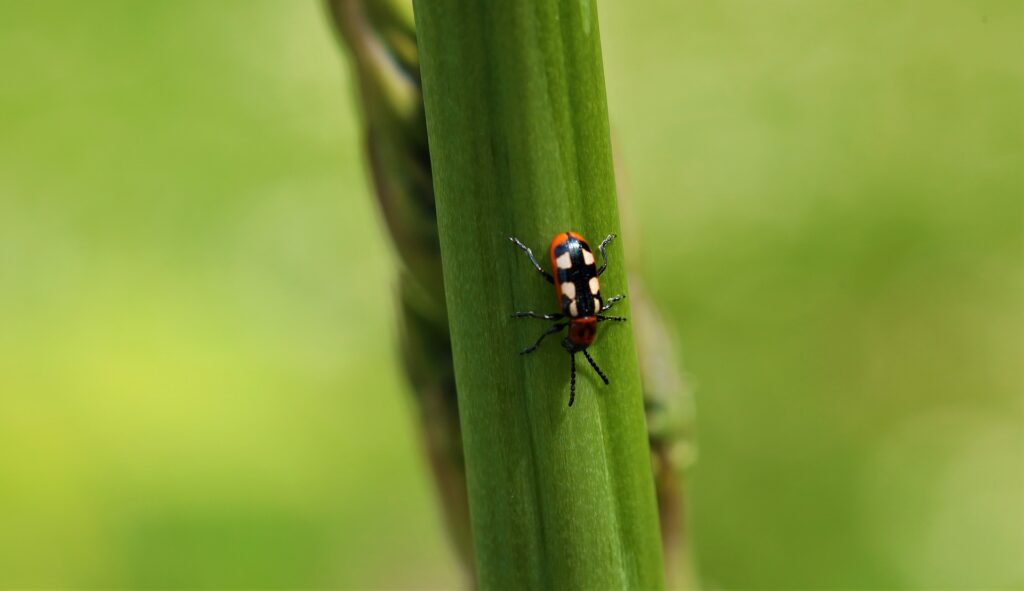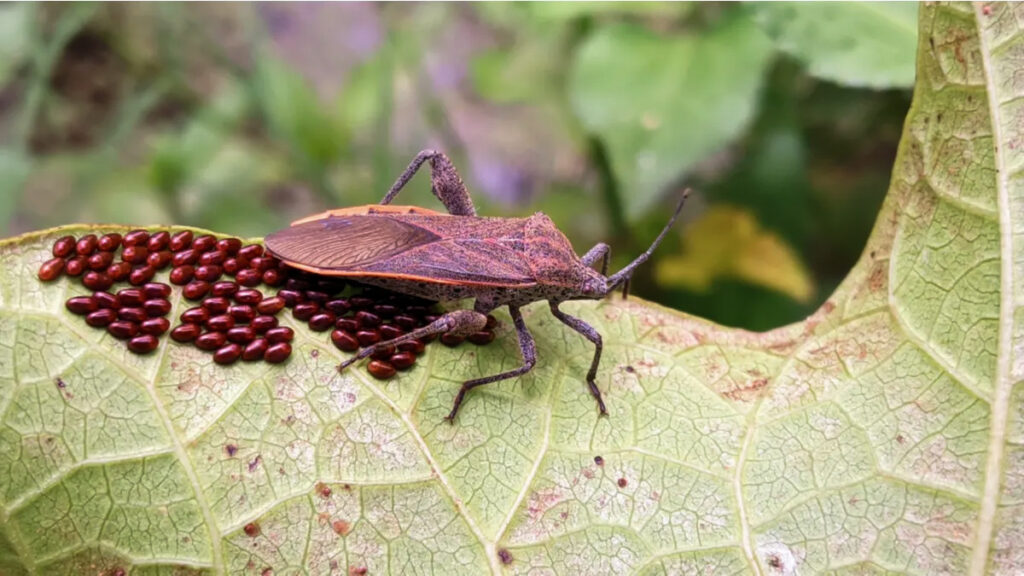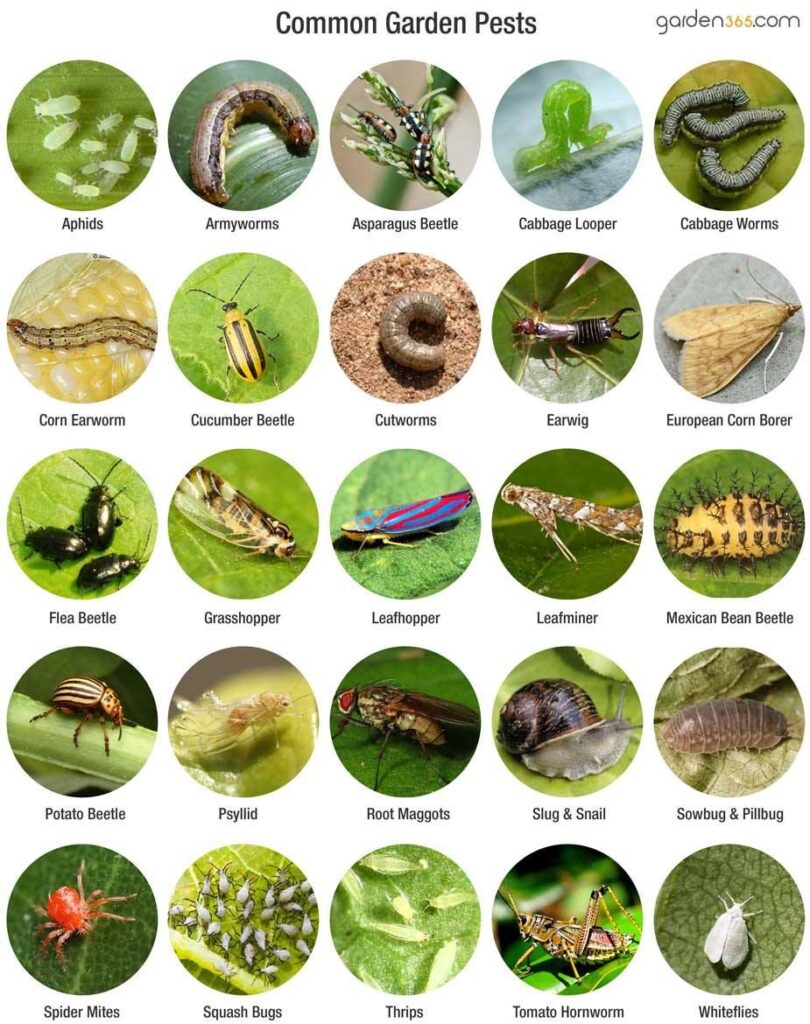
Denise
Professor Communication and Media
Denise is a devoted organic gardener who challenges herself to live as sustainably as possible in her home in southeastern Pennsylvania. She is a professor in the Department of Communication and Media at West Chester University with a Ph.D. from Kent State University. Her teaching and research areas consist of sustainability, close interpersonal relationships, integrating work and family, and conflict resolution.
Learn more about Denise
August 1, 2022
In the Garden of Deeden: Bugs — Are You My Friend or Foe? (Part 1: The Foes)
Well, the answer of insects in the garden as friend or foe is – both. There are millions of insect species throughout the world and scientists estimate that there are over 2.5 million insects in the Amazon Basin alone, many of which have not even been adequately described. Scientists working from ACEER supported canopy walkways and employing our leaf pack protocol in streams continue to discover new genera and new species.
Of course, intrinsically an insect is neither “friend” nor “foe”. They are just engaged in their evolutionary journey. These labels are awarded by us based on our interactions with particular insects. The Maijuna people welcome the many species of stingless bees as they provide honey that supports a thriving economy for Maijuna communities. Termites, for example, as well as the myriad of disease carrying insects, such as mosquitos, cause serious health and property issues for those living in the rainforest. For gardeners, however, less than one percent actually harmfully feed on plants. The trick is being able to identify which is friend and which is foe as well as what to do with the foes and how to cultivate the friends.
“Bad” Bugs
One bad bug that I have to keep an eye on each year is the asparagus beetle. It’s no surprise that the name of the plant they bother is often in the common name of these insects. Both larval and adult forms feed on shoots and leaves, leaving the plants disfigured. Even worse, they have two generations each year. When I start to see them, I tend to squish the adults daily, and I remove the eggs daily. I also try not to leave the debris from the season anywhere near the plants.

One recommendation to help minimize insect pests (I’ll refer to them as bag bugs because I like the alliteration) is to rotate crops, which also helps keep down the chance of various fungal or other diseases. Unfortunately, since asparagus is a perennial, that is not an option.
Cabbage butterflies are another pest that tends to frequent my garden. You may recognize those small white butterflies. Its larvae are serious pests to cabbage, cauliflower, and other related plants. They chew large holes in the outer leaves, leaving their green excrement behind. Again, I mostly hand pick them, but another effective control to minimize their ability to become a real problem is to cover seedlings and/or young transplants with a lightweight row cover. This pest can have as many as six generations per year.
A third bad bug is the squash bug. The adult sort of looks like an elongated stink bug, and it loves vines, most specifically pumpkin and winter squashes, but summer squash, cucumber, and melon are not exempt. The bugs suck sap, leaving damaged leaves to wilt, crisp, and die. Eggs are on the underside of leaves, and there typically are a lot of these tiny brownish eggs.

Other “bad” bugs include aphids, bean leaf beetles, Colorado potato beetles, corn borers (there are actually different borers that are pests to other plants as well), cucumber beetles, flea beetles, harlequin bugs, Japanese beetles, Mexican bean beetles, squash vine borers, tomato hornworms, and quite a few others.

Slugs
Finally, while they are not insects at all, I would be remiss in discussing garden pests if I didn’t mention slugs. Slugs are mollusks, and are more closely related to the octopus than insects. Of the 20 or so slug species in Pennsylvania, I believe I have only seen one type in my garden – the gray garden slug. They’re essentially snails without shells. They can virtually damage any and all crops and can do the most damage during crop establishment both for spring and fall plantings. They typically feed at night, but even if you don’t see them, you often can see the trail of slimy residue they leave behind on brick or concrete walkways. Gardeners can “scout” for slugs by putting pieces of cardboard or roof shingles in places in the garden.

Slugs like dark, most environments, so if you leave those items for a few days and then lift, you’ll find out if slugs are present (and judging from how many you see, you’ll be able to tell how big the problem is). It goes without saying, you will want to dispose of any you find as you see fit. (Note: While slugs are edible, I doubt they will replace the culinary escargot, but if you’re adventurous, tread carefully as they can carry dangerous parasites).
I’ve read in several places that recommend beer bait since slugs can’t resist it. However, any yeasty liquid will do, meaning you can concoct something in your kitchen and save the beer to enjoy for yourself, if you like. Place the beer in shallow containers in the garden.
I’ve also read about spreading wood ashes or coffee grounds around plant bases since the slugs won’t cross sharp materials given their soft bodies – but this requires diligence since reapplication is necessary after each rainfall. Although there are other remedies, the last one I’ll mention is copper, which gives slugs a little electrical shock. The Farmer’s Almanac suggests making a slug barricade by burying a four-inch wide strip of copper flashing about the edge of the bed you want to protect, but this is an expensive option.
On a Positive Note…
Now that I’ve thoroughly depressed the gardeners out there, just know that like many things in life, ignorance actually may not be bliss. It will be to your – and your garden’s – benefit to learn to identify these bad bugs so you can eliminate, or at least control them, before they really wreak havoc. Next month I will offer more optimism since, as this blog entry title suggests, we can rejoice when we see “good” bugs, but we need to learn to identify them too. Stay tuned for next month’s info.
